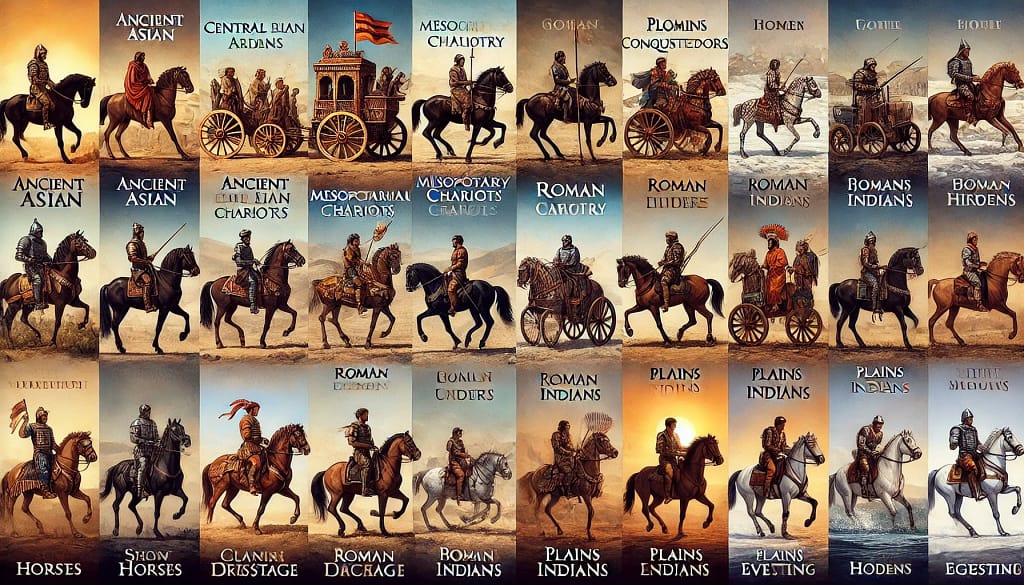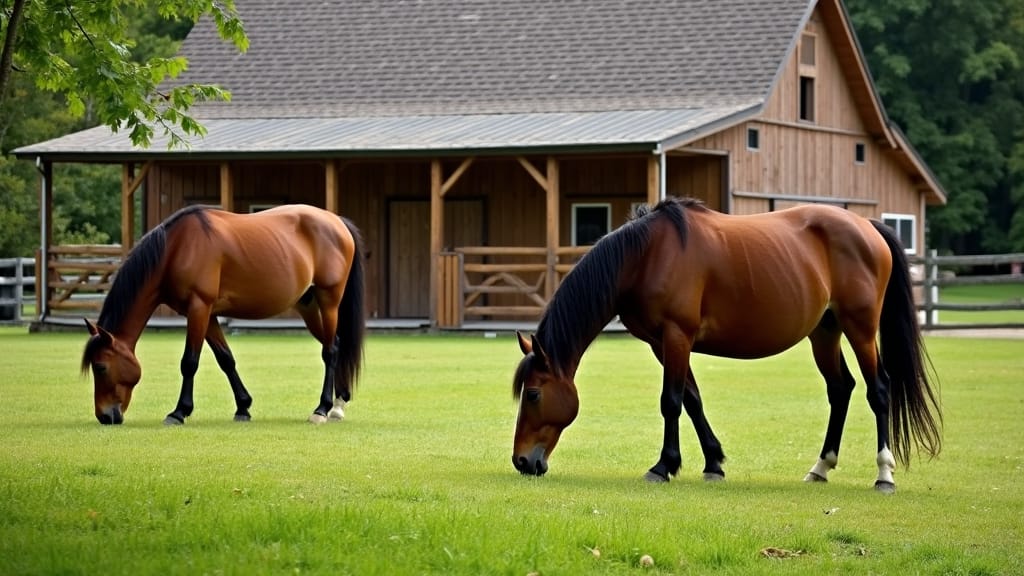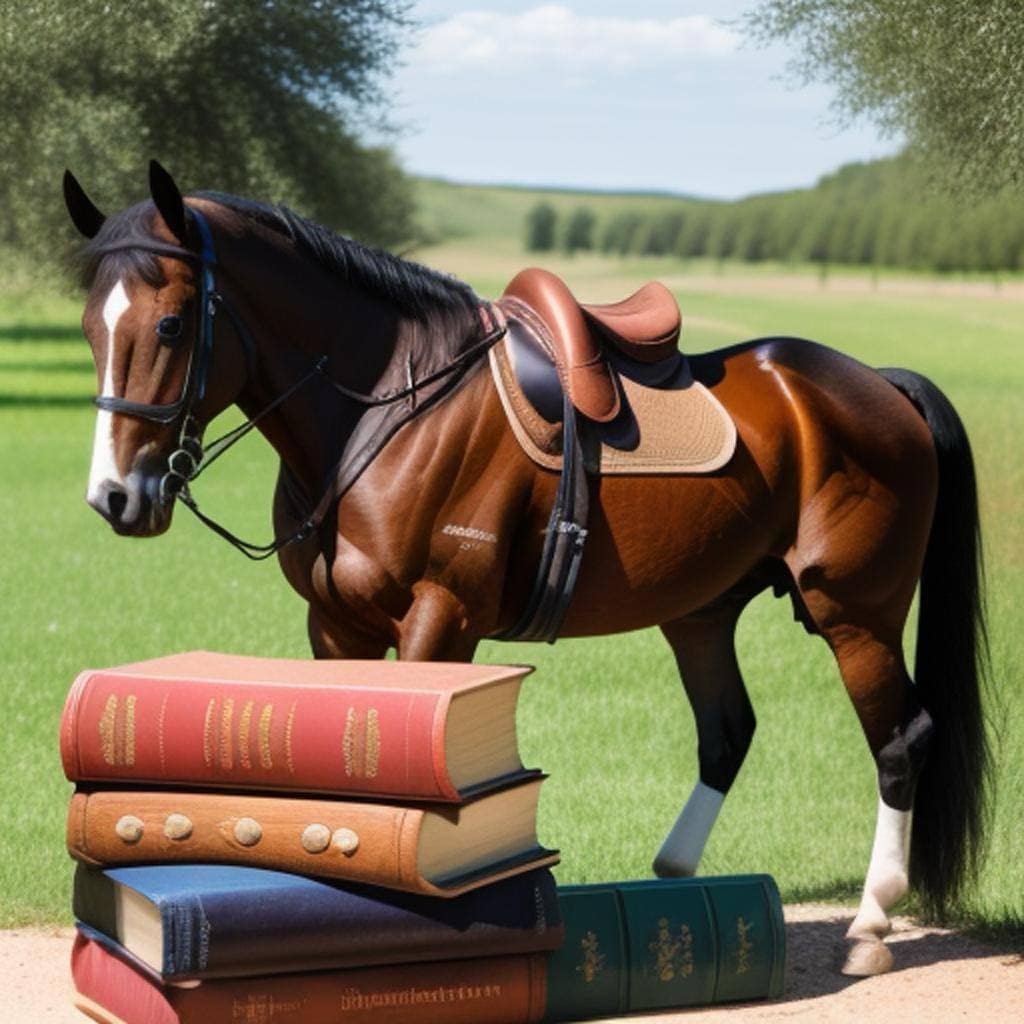
Origins of Horseback Riding
Horseback riding, an art and utility that has significantly influenced human history, likely began around 4,000-3,500 BCE on the steppes of Central Asia. The Botai culture of modern-day Kazakhstan is credited with the earliest known domestication of horses. Evidence suggests that these early humans initially utilized horses for their milk and meat before discovering the advantages of riding.
Horses in Ancient Civilizations
As domesticated horses spread, they revolutionized transportation, agriculture, and warfare. In Mesopotamia, horses were initially used to pull chariots, significantly impacting the mobility and tactics of armies. The chariot became a powerful weapon in the hands of the Hittites, Egyptians, and other ancient civilizations.
In ancient Greece, horses were symbols of status and power. The Greeks developed the first true cavalry, using mounted soldiers for their speed and maneuverability. The writings of Xenophon, an ancient Greek historian and soldier, provide some of the earliest and most influential texts on horsemanship.
The Roman Empire and Beyond
The Romans, known for their engineering prowess and military organization, further advanced horseback riding. They utilized horses extensively in their postal system and military. However, the fall of the Roman Empire led to a decline in structured horse riding techniques in Europe, though the use of horses remained integral to medieval life.
The Medieval Period and the Rise of Knighthood
During the medieval period, horses became essential for knights and mounted warriors. The development of the stirrup, believed to have originated in Asia and arriving in Europe around the 8th century, was a game-changer. Stirrups provided riders with greater stability and control, revolutionizing cavalry tactics.
Knighthood and chivalry emerged, with horses playing a central role in tournaments, jousting, and warfare. The destrier, a powerful warhorse, became synonymous with knights and their martial prowess.
The Renaissance and the Classical Riding Schools
The Renaissance sparked a revival in the art of horseback riding, emphasizing skill and elegance. Classical riding schools, such as the Spanish Riding School in Vienna founded in 1572, were established. These institutions focused on dressage, a discipline that highlights the harmonious partnership between horse and rider through precise movements and control.
The Age of Exploration and the Spread of Horse Culture
The Age of Exploration saw horses introduced to the Americas by Spanish conquistadors. Indigenous peoples, such as the Plains Indians, quickly adopted and adapted to horse riding, transforming their cultures and way of life. Horses became integral to hunting, warfare, and transportation.
Modern Equestrian Disciplines
The 19th and 20th centuries brought significant advancements in horse breeding, veterinary care, and training techniques. This period saw the emergence of formalized equestrian sports and disciplines, many of which were included in the modern Olympic Games, such as dressage, show jumping, and eventing.
Conclusion
From their early domestication on the steppes of Central Asia to their role in shaping civilizations and cultures worldwide, horses have profoundly impacted human history. The development of horseback riding reflects our evolving relationship with these magnificent animals. Today, equestrian disciplines continue to celebrate the deep bond between horse and rider, honoring centuries of tradition and innovation.
Enjoy! ❤️
Build Your Business and Learn Affiliate Marketing
See you there!
Our Unique Value Propositions
Discover why Chwals GPT is the top choice for equestrians looking
to build their online presence (register for free)
Tailored Equestrian Expertise – Community Connection – Intuitive User Experience



